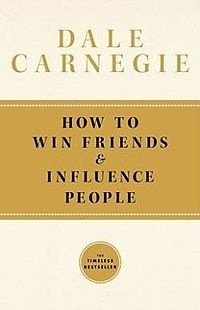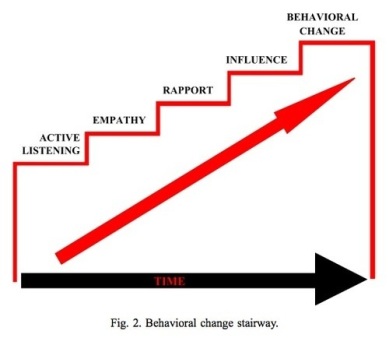
Little changes, big results
This post is in partnership with Inc., which offers useful advice, resources, and insights to entrepreneurs and business owners. The article below was originally published at Inc.com.
Little changes, big results
Regular readers know I definitely believe in the power of hard work. As Jimmy Spithill, skipper of Team Oracle USA, says, “Rarely have I seen a situation where doing less than the other guy is a good strategy.”
But we can all work smarter, too. And clearly we all want to, as evidenced by the popularity of this recent post, 5 Scientifically Proven Ways to Work Smarter, Not Harder.
The tips were provided by Belle Beth Cooper, content crafter at Buffer, the maker of a social-media management tool that lets you schedule, automate, and analyze social-media updates. (Cooper is also the co-founder of Exist.)
That post was so popular I asked Cooper for more ways anyone can make a workday more productive without putting in extra hours. Here are five:
1. Rework your to-do list. I’ve written about the history of the to-do list before, and how to write a great one.
One of the most counterintuitive but effective methods I’ve found for increasing my productivity is to limit how many items I add to my to-do list.
One way to do this is by choosing one to three most important tasks, or MITs. These are the big, tough tasks for your day that you really need to get done; the ones that will keep you in the office past the time you planned to leave, or working after dinner if you don’t get through them.
Leo Babauta advocates doing these before you move on to other tasks:
“Do your MITs first thing in the morning, either at home or when you first get to work. If you put them off to later, you will get busy and run out of time to do them. Get them out of the way, and the rest of the day is gravy!”
The rest of your to-do list can be filled up with minor tasks that you would do as long as you complete your MITs. Make sure you work on those before you move on to less critical tasks and you’ll find you feel a whole lot more productive at the end of the day.
Another to-do list tip that can reduce work anxiety is to write your to-do list the night before. I often end up in bed not only thinking about what I need to do the next day but also planning the day; obviously, that makes it difficult to sleep. Writing my to-do list before I go to bed helps me relax and sleep better.
And rather than wasting time in the morning because I don’t know what to work on first, I can jump straight into my first MIT the next day.
One more to-do list tip: Focus only on today.
My most recent and favorite change to my to-do list has been to separate my “today” list from the master list of everything I need to get done.
I often feel anxious about all the things I know I need to do at some point. I need to write them down somewhere so I don’t forget them, otherwise I worry about when or if they will get done. But I don’t want those items cluttering up my list for today; that will just make today seem even busier than it already is.
My solution is to make a big list of everything I need to do. Then, every night, I move a few things to my to-do list for the next day. (I use one big list with priority markers so that anything “high” priority moves to the top and becomes part of my “today” list.)
That lets me focus on what I must do today, but it also gives me a place to dump every little task I think of that someday must get done.
Take it from David Allen, the author of Getting Things Done: “Your mind is for having ideas, not holding them.” Park your ideas on your to-do list, but make sure you create a “today” list and a “someday” list. That way you won’t waste energy trying to remember important ideas and you’ll ensure today won’t feel overwhelming.
2. Measure your results, not your time. The whole idea of working smarter rather than harder stems from the fact that many of us put in more and more hours only to findwe don’t get more done. That’s why we want to find methods to be more productive in less time.
One way to do this is to adjust the way you measure productivity. If you evaluate yourself by what you actually get done rather than the time it takes to get something done, you’ll start to notice a difference in how you work.
For example, if you have a big project to complete, try breaking it down into “completable” sections. For instance, I like to break down my blog posts into sections and small tasks like adding images. With a set of smaller tasks making up a big project, I can check off what I get done each day, even if it takes me many days to finish the whole project. I get a nice little rush every time I check off a task within a blog post, even if it was just a 200-word section. It helps me maintain momentum and keep going until the whole post is done.
Another way to measure what you get done each day is to keep a “done list,” a running log of everything you complete in a day. I scoffed at done lists for a long time until I joined Buffer, where we all share what we’ve done each day using iDoneThis.
If you start keeping a list of everything you get done in a day, you might be surprised how much more motivated you are to do work that matters and stay focused so you get even more done.
Focus on measuring by results, not by time on task, and you’ll definitely get more done.
3. Build habits to help you start working. If I don’t have a plan for what to work on first, I tend to procrastinate and waste time in the mornings. You might have a differentdanger time for procrastination, but getting started seems to be a hurdle for most of us.
One way to overcome this problem is building a routine that tells your brain and body it’s time to work.
Your routine could be something as simple as your daily commute or grabbing a coffee on the way to work. I usually sit at my desk with my coffee and check up on my favorite sites to see if there’s any news. Once my coffee is finished, that’s my cut-off point: It’s my trigger to start working.
Other ways to get into a working mindset can include sitting down at your desk or workspace, turning off your phone or putting it away, exercising, stretching, or eating breakfast. You could even have an album or playlist that gets you in the mood to work and listen to that as part of your routine.
The same technique works on weekends, too. Although you might be tempted to let go of your routine entirely on your days off, our CEO has found that maintaining a weekend routine that doesn’t differ too much from his weekdays works well: The more he let go of his routine on the weekends, the longer it took him to pick it up again during the week.
Routines aren’t a sign of boring, regimented people. Routines are a sign of people who have goals and have found the best way–for them–to actually accomplish their goals.
4. Track where you waste time. If you’re struggling to be productive, it’s tempting to change your routine or try new solutions before you uncover the real problem. (I’ve done this in the past and found it never leads to a long-term solution.)
The first step in becoming more productive is to identify your regular time-sucks. Start by tracking what you do every morning to get ready for work. You might find you’re spending time on things such as choosing your clothes, something you could do the night before. (Or like our co-founder, you could just wear jeans and a white t-shirt every day.)
Then, keep going: Track how you spend your time during the day and look for patterns. A tool like RescueTime can help. Maybe you’ll find you’re getting caught up on Facebook too often. Or that what should have been a two-minute work conversation regularly turns into a 10-minute chat session.
Once you know what takes up your time or leads you to procrastinate, start making specific changes around those habits.
I used to waste a lot of time in the mornings checking out my favorite sites for news or updates. Now I factor it into my routine; as I mentioned, I do it while I drink my coffee, and when the coffee is gone, it’s time to start working.
5. Build habits to help you stop working. This one might seem a bit strange, but it really works. Some of us struggle to stop working, rather than (or as well as) start working.
It’s easy to just keep going for another hour, or to get your computer out after dinner and work until well after bedtime. The worst thing about these habits is that they encourage us to put off our MITs; we figure we’ll be working long enough to be sure to get them done. (But, of course, we don’t.)
Here are a few ways to switch on at-home time and leave work behind:
Quit while you’re ahead. Take it from Hemingway: “The best way is always to stop when you are going good and when you know what will happen next. If you do that every day…you will never be stuck.”
His advice can apply to all kinds of work. Stopping in the middle of a project can work well: You know what you’ve done, you know exactly what you’ll do next, and you’ll be excited to get started again.
Set a firm cut-off time. Sean Ogle wrote a great post about this. Most days he has a (pretty extreme) strict cut-off time of noon. You could make this work with an evening cut-off time to get you out of work by, say, 5 p.m.
Ogle gets up early, so he has five to six hours of work time before his midday cut-off point. But because he’s strict about stopping work at noon, he still needs to be ruthless in prioritizing his tasks.
Another benefit of a strict cut-off time is you’ll be a lot more motivated to complete your MITs first; the pressure of a looming deadline will help keep you focused.
Another way to limit your work time is to unplug your laptop power cord. Then you can only work as long as your battery lasts. It’s great motivation to get important things done more quickly.
Plan something cool for after work. Another tip from Ogle is to plan an activity or event for after work. In Ogle’s case, he plans to catch up with friends or attend events around 12:30 or 1 p.m., which helps reinforce his noon cut-off time.
If you want to get out of the office around 5 p.m., you could set up a dinner date, a quick after-work drink with a friend, or a family visit. External forces and peer pressure can give you motivation to get things done within the time you have.
Create a wind-down routine. Having a routine to help you wind down from work can be helpful if you often struggle to switch off. Light exercise works well for me, so I like to walk home from the office or take a walk after work. Our CEO goes for an evening walk as part of his going-to-bed routine because it’s such a good winding-down activity.
Journaling can be really relaxing, as can talking through your day with a partner or friend. Something Benjamin Franklin used to do was ask himself every night, “What good have I done today?” Writing about your day can be a good way to reflect and keep a log of what you’ve done, as well as to transition out of your work mode. If you’re getting into the habit of planning your day the night before, this can be a good way to cap off your workday: Pick out your MITs for tomorrow and create a task list, so you can relax once you leave work.
Source: Jeff Haden, time.com





